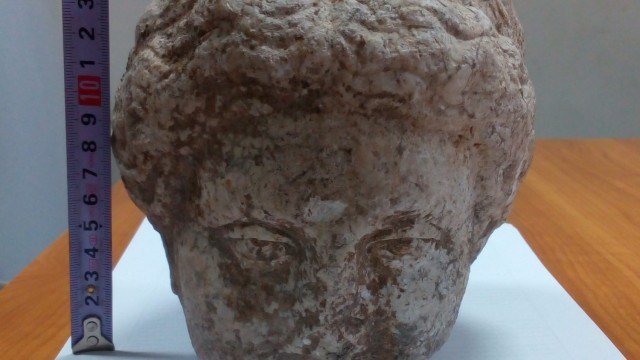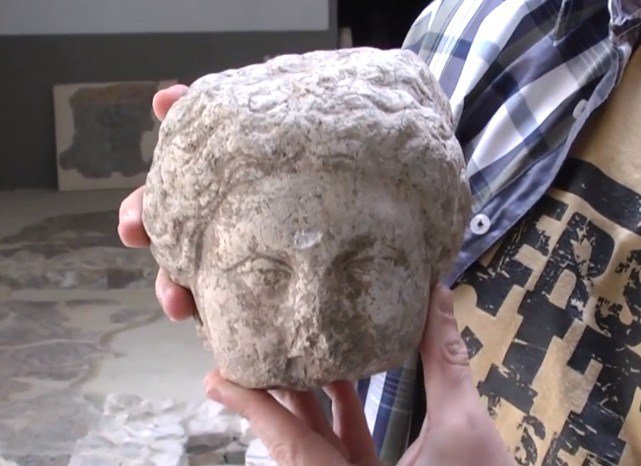
The Roman statue head has been found during digs on private property, just about 10-15 cm below the modern-day pavement, its finder Atanas Atanasov has told bTV.
Atanasov is the curator of the Ancient Archaeology section at the Stara Zagora Regional Museum of History.
The female statue head is 15 cm tall, and was probably part of a life-size statue that was about 150-160 cm (app. 5 feet) tall.
The artifact most probably dates back to the 2nd-3rd century AD, a time when the Ancient Roman city of Augusta Traiana, the predecessor of Bulgaria's Stara Zagora. However, it is yet to be dated more precisely.

"In those times, hairstyles were very specific. In the 1st century AD, there were certain hairstyles, in the 2nd century there were others, etc. So the hairstyle will also help us for the dating," he adds.
"[The Ancient Roman city of] Augusta Traiana probably had sculptors who made statues. Since this was expensive, if the marble head belonged to a resident of the ancient city, she probably came from a wealthy family. Of course, it is also possible that the head depicts a deity," the archaeologist has told local news site InfoZ.
No other parts of the statue have been found during the rescue excavations of the privately-owned plot slated for residential development which is located on the Vasil Levski Street in section A of the Augusta Traiana - Vereia Archaeological Preserve in Bulgaria's Stara Zagora.
Atanasov notes that statue heads are not that common among archaeological discoveries because, just like the limbs of the statues, they are more fragile; that is why archaeologists most often discover torsos.
This is actually the second Ancient Roman marble statue head found in Bulgaria's Stara Zagora in 2015, after the discovery of a gladiator head during regularly scheduled digs in Augusta Traiana in August.
"A marble head is not that unique a find but I am happy that we found it and saved it. It will be added to the rich collection of the Stara Zagora Regional Museum of History for future generations to enjoy," he states.
The female statue head has been discovered inside an Ancient Roman structure from a later period which also complicates the dating of the artifact.
So far the Stara Zagora archaeologists have excavated the structure's thick walls, up to a meter wide and about 70 cm tall, of what might have been a public building in Augusta Traiana. They have revealed two large rooms and a corridor.
The substructure, i.e. the underlying foundation of the building, was built of crushed stones and mortar, while the walls were made of both stone and bricks.
The rescue excavations in section A of the Augusta Traiana - Vereia Archaeological Preserve have been completed for the time being but are due to be resumed in March 2016.
Unfortunately, part of the section cannot be excavated at present because it lies under modern-day buildings.



Reader Comments
to our Newsletter